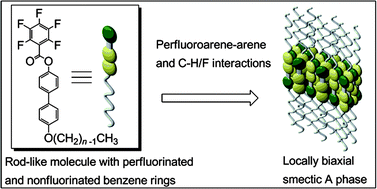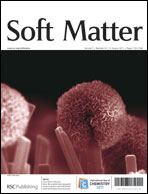Generation of biaxiality in smectic A phases by introduction of intermolecular perfluoroarene–arene and C–H/F interactions, and the non-odd–even effect of the molecules in their transition temperatures and layer distances†
Abstract
Compounds 1a–j, 4-alkoxy-4′-pentafluorobenzoyloxybiphenyls, were synthesized to investigate the biaxiality in the smectic A phases of rod-like molecules possessing both perfluorinated and non-fluorinated benzene rings. The phase behaviors of the compounds and the molecular packing structures of their smectic A phases were investigated by


 Please wait while we load your content...
Please wait while we load your content...